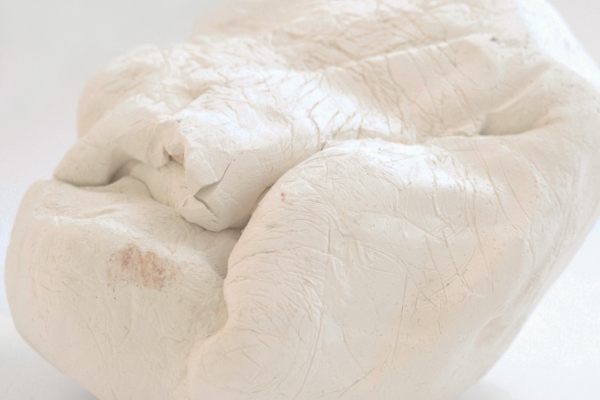
This lump of buff-coloured, dried-out earth is unfired stoneware clay. Unlike porcelain clay, stoneware is unrefined; the greyish colour and slightly gritty feel come from the impurities in it, like sand and organic matter. Whilst porcelain is fine, thin, and translucent, stoneware is very dense, relatively durable and chip-resistant once fired properly. This clay is fired at very high temperatures of around 1200° C and can be used to make non-porous and vitreous or semi-vitreous containers that ring like a bell when struck. It can also withstand extremes of temperature, so is popular in cookware and chemical laboratory equipment.
The sample we have here is unfired but has dried out as the water has evaporated from it over time, causing it to become friable and chalky. However the defining characteristic of clays, as opposed to other inelastic earths, is that with the proper amount of water they form a sticky and cohesive mass that can be moulded. As long as its structure is unchanged (by firing, for example) a dried lump of clay can always be rehydrated by soaking it in water.
If you smell it you can also detect a distinctly mouldy odour; something a potter would embrace, since mould and bacteria contribute to the ‘flocculation’ of the clay – the tendency of particles to stay together and not to crack – and hence its workability.
Sample ID: 337
Add materials you find interesting to your own selections.
Use the  button to select a material and get started.
button to select a material and get started.

